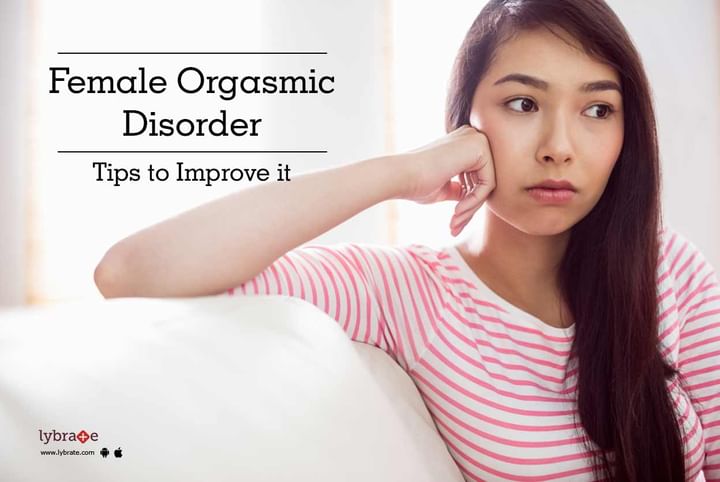Female Orgasmic Disorder - Tips to Improve it
Though the act of intercourse is portrayed as an act of pleasure, achieving an orgasm is an indication of a satisfying sexual act. Inability to achieve an orgasm is far more common in females than in males and this can be due to various reasons.
Read on to know some more about the causes and ways to manage this:
A mix of psychological, social, and physical conditions can lead to orgasmic disorders in female. Some of the common causes are listed below:
- History of sexual abuse
- Stress
- Poor self-esteem
- Relationship issues, lack of trust, conflicts, etc.
- Cultural or social beliefs
- Advancing age
- Chronic medical conditions like diabetes
- Medications like selective serotonin reuptake inhibitors (SSRIs), which are frequently used in depression (depression is common in women)
- Gynecologic issues like hysterectomy
It is a vicious cycle that is contributed by more than one of these factors, which leads to strengthening of the disorder in the future. Types of orgasmic disorders: There are four types of orgasmic disorders, which are as follows:
- Primary anorgasmia: Women with such disorders have never been able to achieve an orgasm.
- Secondary anorgasmia: Over a period of time, women who previously have had orgasms are unable to achieve an orgasm.
- Situational anorgasmia: Women suffering from it would be able to achieve an orgasm only during certain situations like oral sex or masturbation, but may not climax during regular sexual intercourse.
- General: These women could be highly stimulated and aroused, but would still be unable to achieve climax.
Management and diagnosis
The first step in management is diagnosis. A detailed discussion with the doctor about sexual history followed by physical examination can help identify the problem. Being open about discussing this private topic is very important in diagnosis and treatment.
Treatment would depend on the underlying cause, and include the following:
- Diagnose and treat/manage underlying medical conditions like diabetes.
- Switch to an alternate antidepressant if SSRIs are being used.
- Involve in sex therapy where cognitive behavioral therapy is a big component. Becoming aware of what can be is very important.
- Sexual counseling with the partner to resolve any conflicts, improves trust levels and the overall health of the relationship. This is often a major cause for this disorder.
- Involving the partner to help in achieving an orgasm by clitoral stimulation, etc.
- Hormone therapy in the form of a pill, patch or gel may be used to increase sensitization in the genital area. These help by improving blood flow to the genitals and increasing sexual desire.
It is important to understand that female anorgasmia is very common and though it can be frustrating, it can be managed effectively. But do not forget to admit the problem and seek help. If you wish to discuss about any specific problem, you can consult a gynaecologist and ask a free question.



+1.svg)
